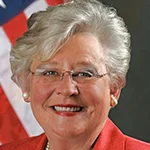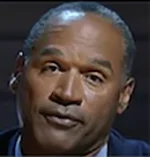 |
| Darlene Doyle |
If you didn’t already have experience with crisis PR, the past few months has given us all a crash course. Most recently, the tragic death of George Floyd has been a call to arms for our industry to do its part in fighting for black lives and ending systemic racism.
With this, the topic of diversity and inclusion has made its way to the top of every executive’s agenda. As we navigate our agency, our industry and our clients, here are some guiding principles we must consider to be better and do better.
Start with your people
It all begins at home, within the (virtual) walls of our own company. If you ever doubted (or got pushback) on why defining your company values is important, these values have now taken a seat at the head of the class. Making it clear what your company stands for—and, more importantly, what it won’t tolerate—is critical.
In fact, in a recent study, 74 percent of respondents ages 22 to 37 said brands should take a public stance on important social values. Millennials have been outspoken on wanting to work for organizations that support their beliefs.
Now is the time to restate your values, make them known loudly and clearly throughout your organization and use them as a guidepost for your actions. If your actions aren’t aligned with your values, you have work to do.
You have an opportunity to make your team feel proud to be part of your organization and to be part of a collective force for good and change. Create a safe space for your team to share stories, experiences and challenges.
Words Matter
We’re in the business of communications, and by extension the business of words. As leaders in your organization and in your industry, when you speak, people will listen. And when you write, they will read. This means you need to choose your words wisely. The Wall Street Journal analyzed statements from 35 executives on the killing of George Floyd and found a wide variety in the specific terms used by major corporate leaders.
Part of inviting in diversity (which by definition is “the inclusion of individuals representing more than one national origin, color, religion, socioeconomic stratum, sexual orientation, etc.”) means inviting in different people with different backgrounds, points of view, life experiences and histories. This means a word or phrase that might seem benign to you could be highly inflammatory to someone else.
Bringing those voices to the forefront for a gut check on what you say will help you create a more thoughtful and diverse statement. And know that what you say won’t always be perfect, but it’s better than not speaking at all.
Listen, Learn and Educate
In that order! Check your ego at the door. You may be used to having all of the answers (and providing your clients with them). But it is OK (in fact, preferred) to know when you don’t have all the answers. We know that when we don’t have all of the answers, asking the right questions and listening will help us learn along the way.
You can also play a role in helping to educate. Work with your team to pull together a collective resource center around anti-racism, including books to read, podcasts to listen to and influencers to follow. A rising tide lifts all boats, and if we all make a commitment to better educate ourselves, we are making a step toward progress.
Take Action
We have seen the backlash within our industry toward companies who are perceived as providing “lip service” to anti-racism. The old adage remains strong: Actions speak louder than words. Your statement can be your first step but not your last step.
Action doesn’t have to look the same way for every company. It can come through giving to a cause that supports anti-racism and Black Lives Matter, or it could be investing in unconscious bias training, making a pledge to build a more diverse workforce or creating a community around D&I. Whatever you do, do something.
Get used to “business as unusual”
For several months, we have all been wondering when we might go back to “business as usual.” The answer is that business is unusual. A fundamental shift has taken place within our industry, and the death of George Floyd is now a reminder that we don’t want to go back to business as usual. We want to see and force change.
What this means for us in our day-to-day world is that we need to proceed with care and caution. When pitching the media, we need to do our homework—more so than ever—to be sure we’re reaching out to the right person at the right time. It’s critical that we’re not coming across as tone-deaf or lacking insight into the broader conversations and trends.
When we’re posting on social, we need to check both tone and timing. Self-promotional content not only won’t fly, it will stand out like a sore thumb. Taking an education-first, “for the greater good” approach to content will resonate much more strongly. We want to continue to challenge ourselves and our clients on how we communicate.
Get comfortable being uncomfortable
We won’t have all the answers, and we won’t get all of the words right. But we can commit to getting comfortable being uncomfortable. Don’t let being uncomfortable be a reason for not speaking up and stepping out. Being uncomfortable and working through it is a critical step to growth and progress.
Be authentic
In times of crisis and tragedy, authenticity is key. If you come across as something you are not, or saying something you don’t believe, people will sniff it out. Take the time to make real connections and have real conversations—with your team, your industry colleagues and your clients. Remember, we are humans first and communicators second.
***
Darlene Doyle is executive vice president of client relations at PAN Communications.


 Southern governors claim they know what's best for their working class, and it's not pay raises... A Ukrainian human rights group played a key role in convincing House Speaker Mike Johnson to hold a vote to send arms to Ukraine, Israel and Taiwan... Trump Media & Technology Group blames short-selling and not lousy outlook for its stock slump.
Southern governors claim they know what's best for their working class, and it's not pay raises... A Ukrainian human rights group played a key role in convincing House Speaker Mike Johnson to hold a vote to send arms to Ukraine, Israel and Taiwan... Trump Media & Technology Group blames short-selling and not lousy outlook for its stock slump. The techniques deployed by OJ Simpson's defense team in the 'trial of the century' served as a harbinger for those used by Donald Trump... People worry about the politicization of medical science just as much as they fret about another pandemic, according to Edelman Trust Barometer... Book bans aren't restricted to red states as deep blue Illinois, Connecticut and Maryland challenged at least 100 titles in 2023.
The techniques deployed by OJ Simpson's defense team in the 'trial of the century' served as a harbinger for those used by Donald Trump... People worry about the politicization of medical science just as much as they fret about another pandemic, according to Edelman Trust Barometer... Book bans aren't restricted to red states as deep blue Illinois, Connecticut and Maryland challenged at least 100 titles in 2023. The NBA, which promotes legalized gambling 24/7, seems more than hypocritical for banning player for placing bets... Diocese of Brooklyn promises to issue press release the next time one of its priests is charged with sexual abuse... Truth Social aspires to be one of Donald Trump's iconic American brands, just like Trump University or Trump Steaks or Trump Ice Cubes.
The NBA, which promotes legalized gambling 24/7, seems more than hypocritical for banning player for placing bets... Diocese of Brooklyn promises to issue press release the next time one of its priests is charged with sexual abuse... Truth Social aspires to be one of Donald Trump's iconic American brands, just like Trump University or Trump Steaks or Trump Ice Cubes. Publicis Groupe CEO Arthur Sadoun puts competition on notice... Macy's throws in the towel as it appoints two directors nominated by its unwanted suitor... The Profile in Wimpery Award goes to the Ford Presidential Foundation for stiffing American hero and former Wyoming Congresswoman Liz Cheney.
Publicis Groupe CEO Arthur Sadoun puts competition on notice... Macy's throws in the towel as it appoints two directors nominated by its unwanted suitor... The Profile in Wimpery Award goes to the Ford Presidential Foundation for stiffing American hero and former Wyoming Congresswoman Liz Cheney. JPMorgan Chase chief Jamie Dimon's "letter to shareholders" is a must-read for PR people and others interested in fixing America and living up to its potential... Get ready for the PPE shortage when the next pandemic hits... Nixing Netanyahu. Gaza carnage turns US opinion against Israel's prime minister.
JPMorgan Chase chief Jamie Dimon's "letter to shareholders" is a must-read for PR people and others interested in fixing America and living up to its potential... Get ready for the PPE shortage when the next pandemic hits... Nixing Netanyahu. Gaza carnage turns US opinion against Israel's prime minister.


 Have a comment? Send it to
Have a comment? Send it to 
No comments have been submitted for this story yet.